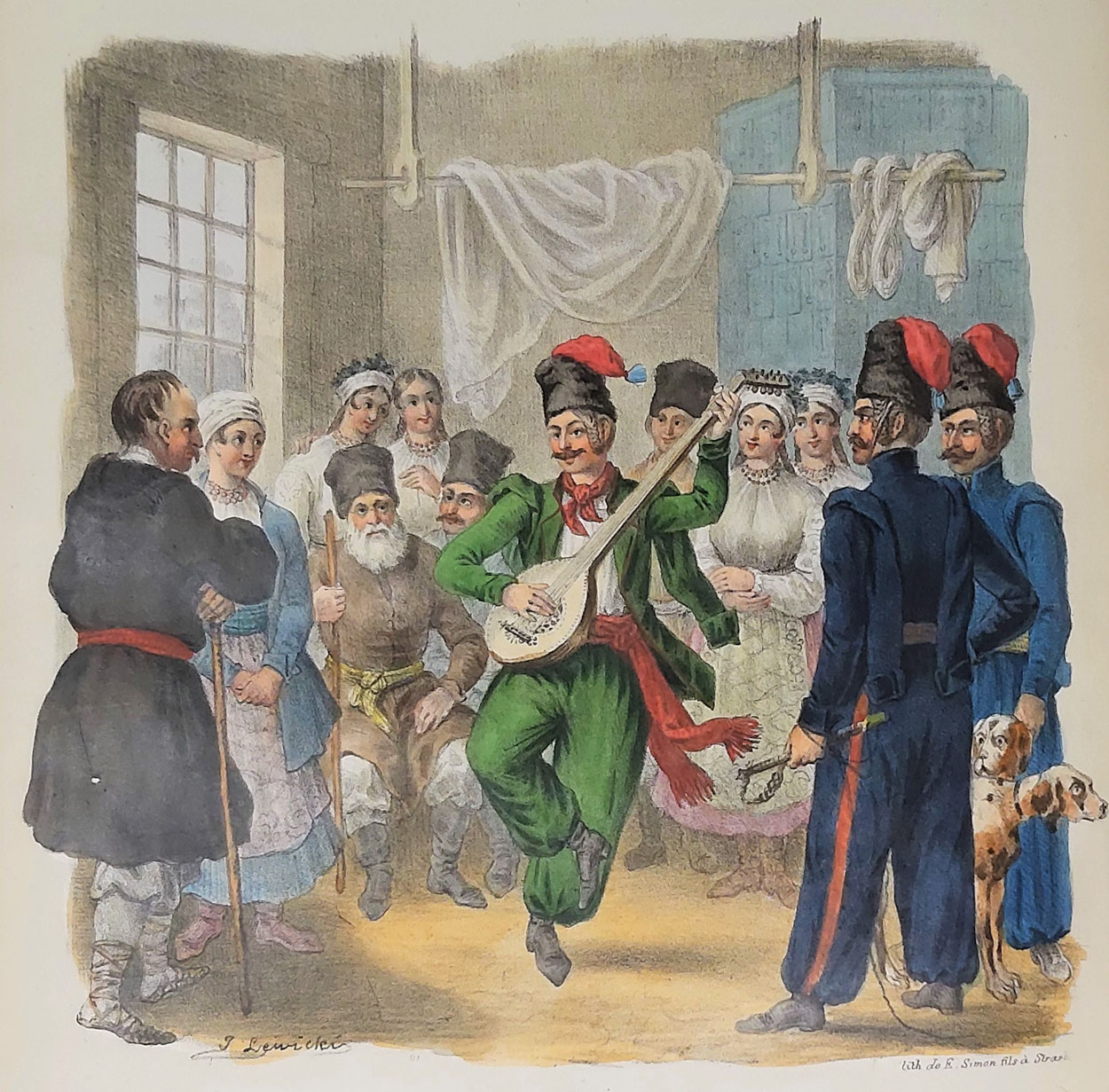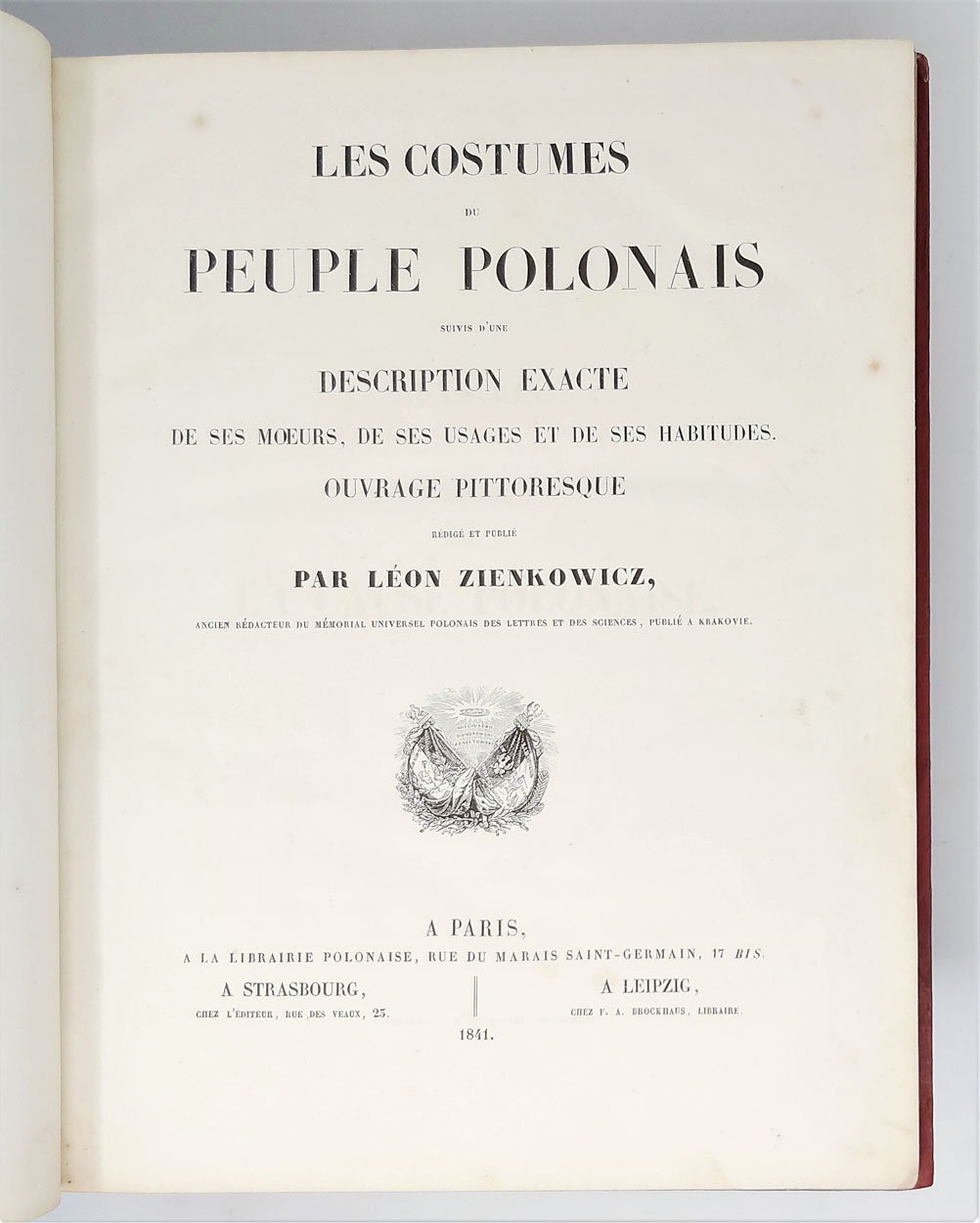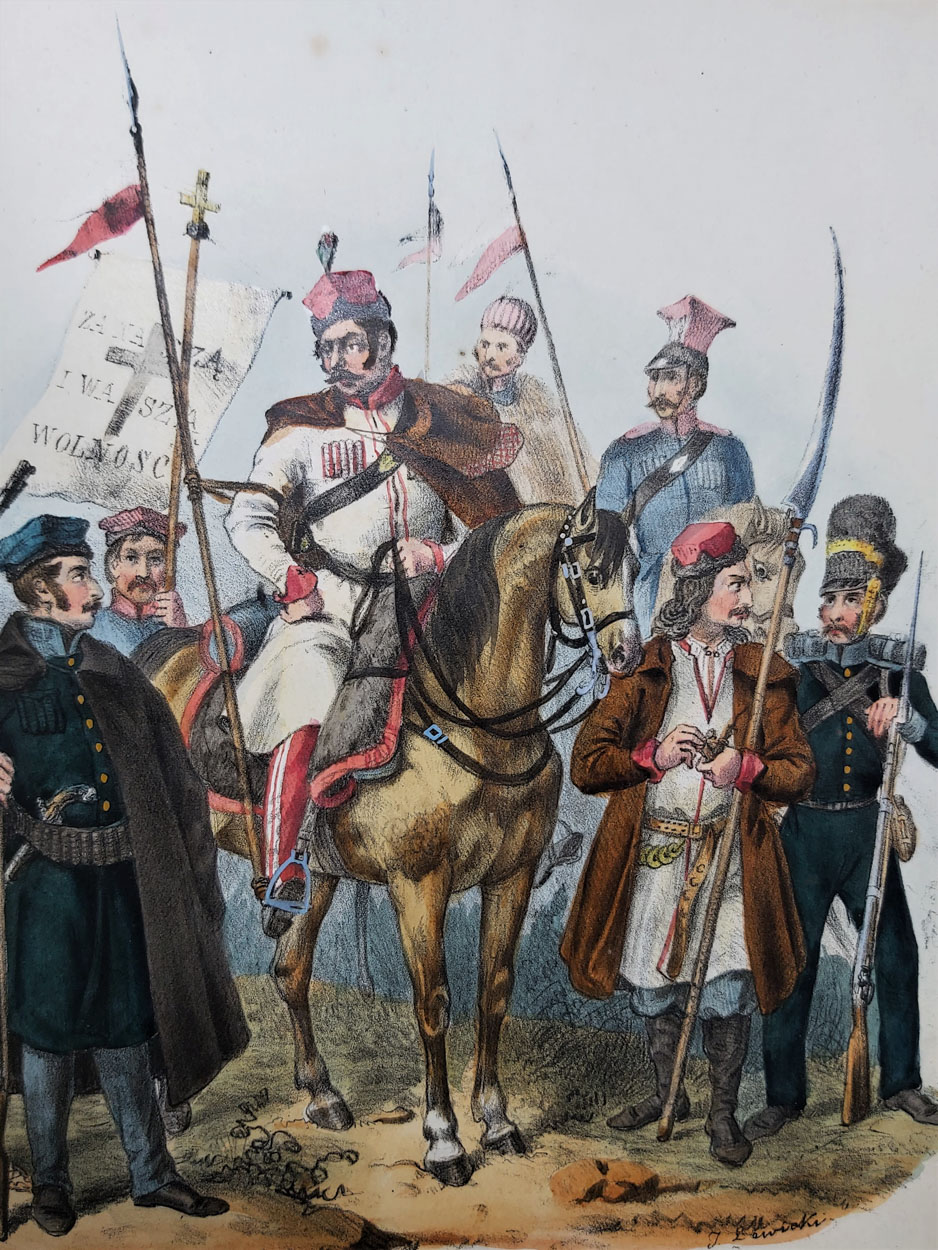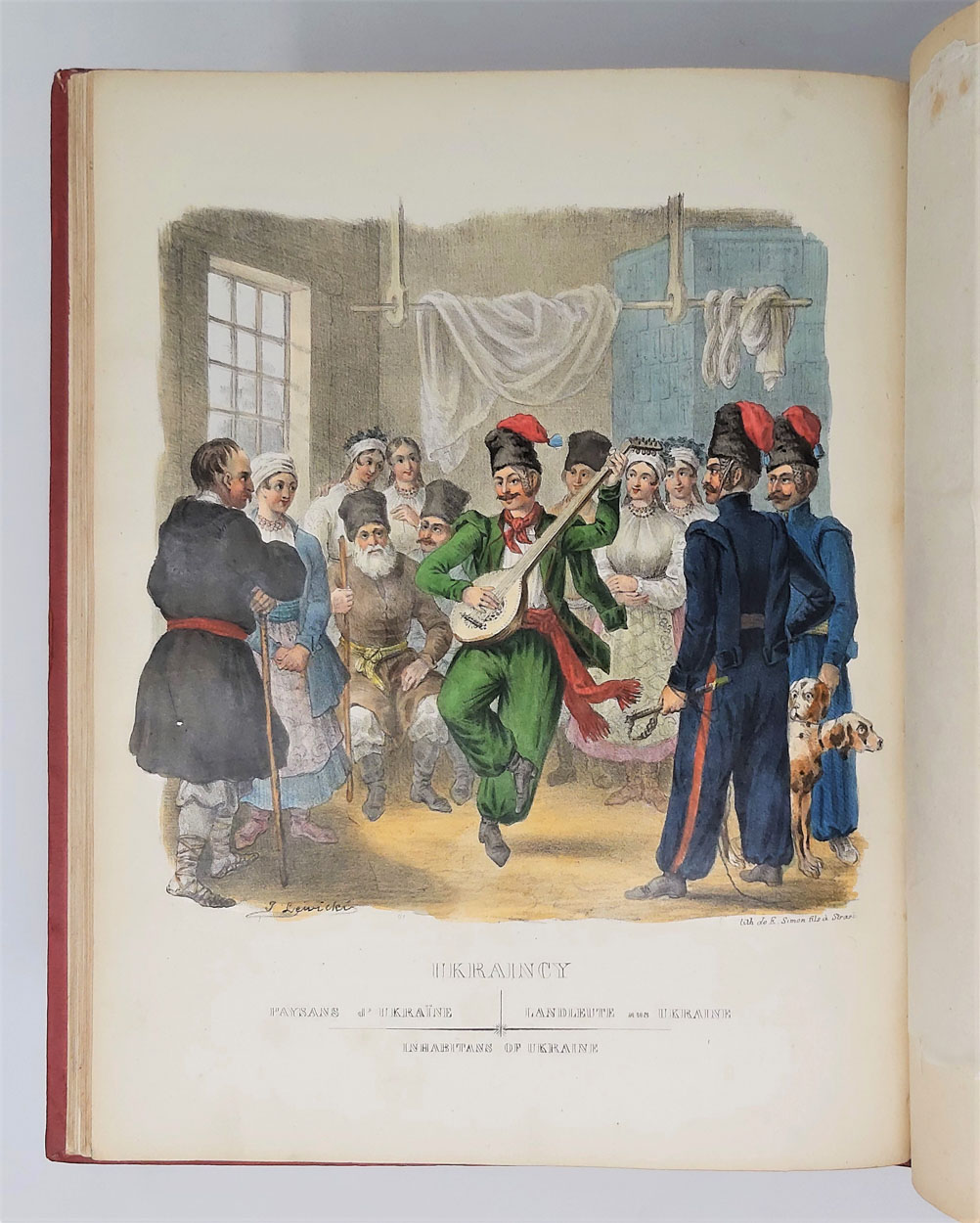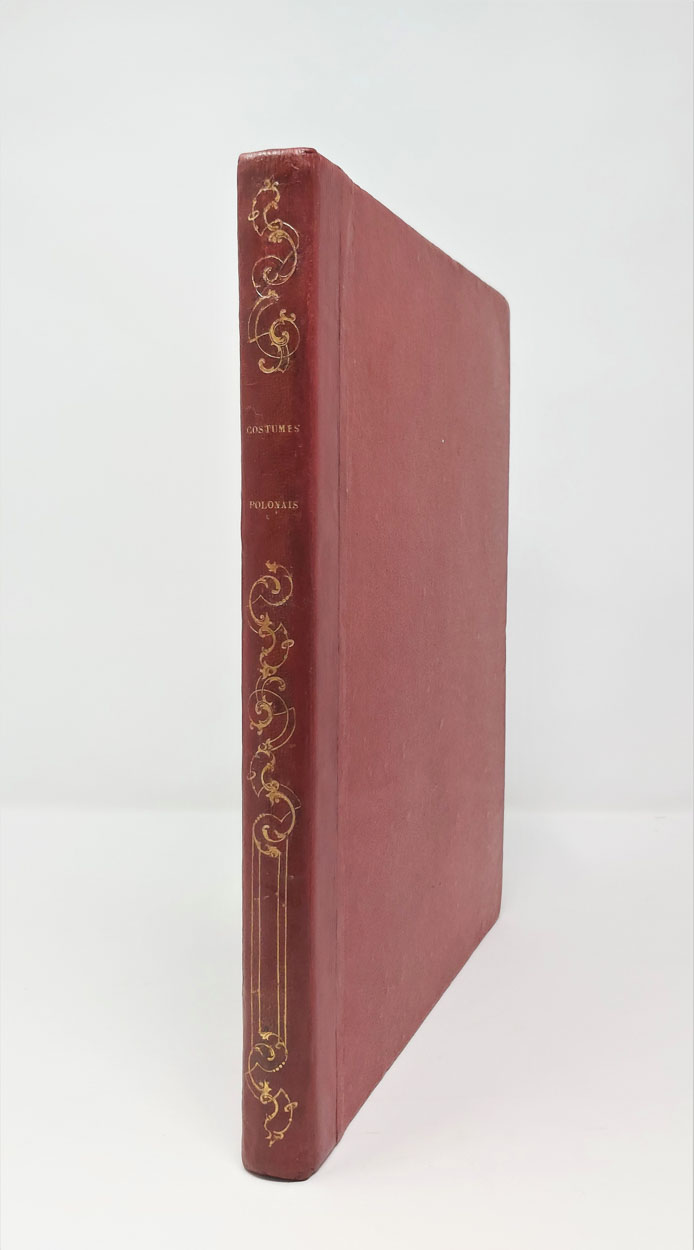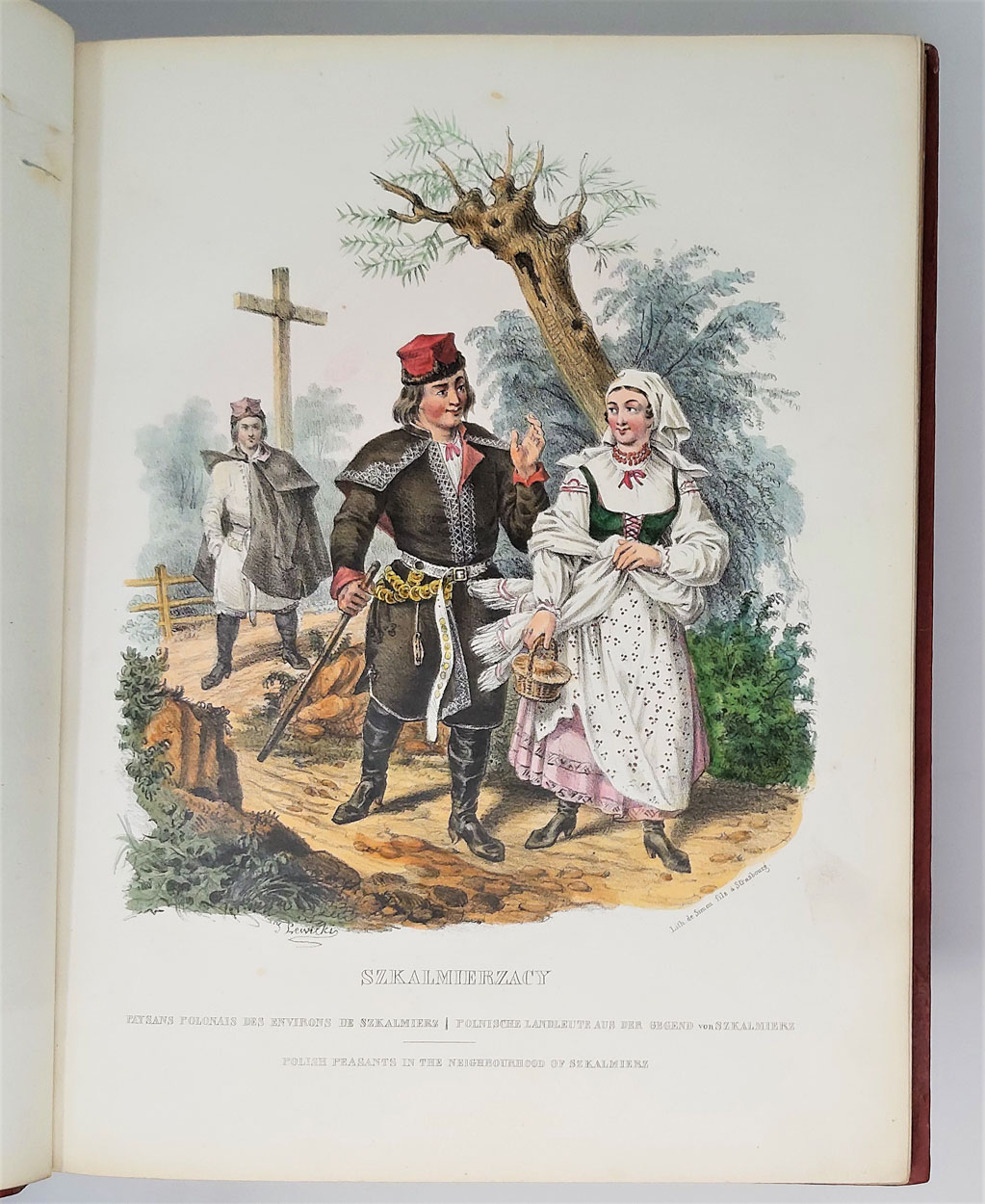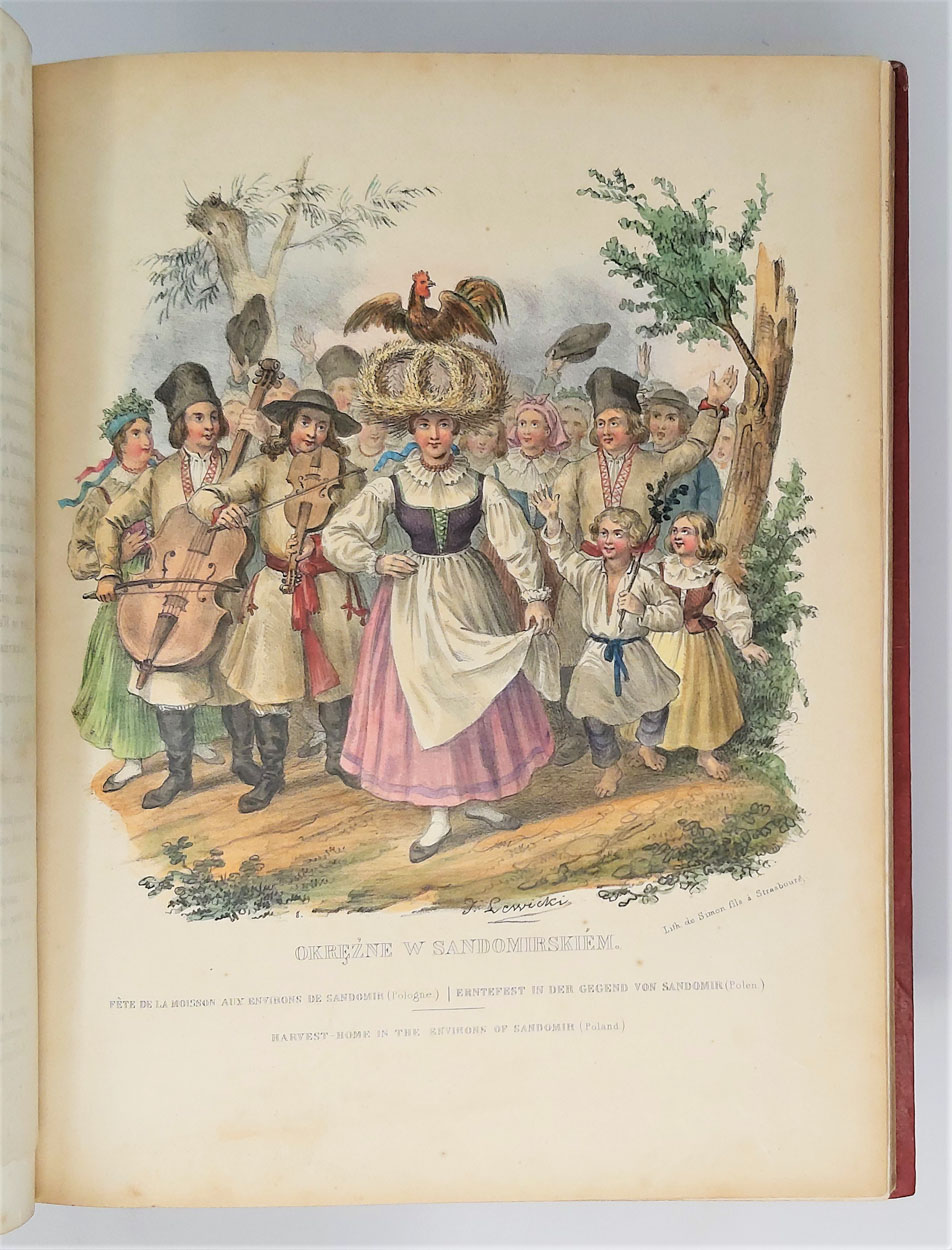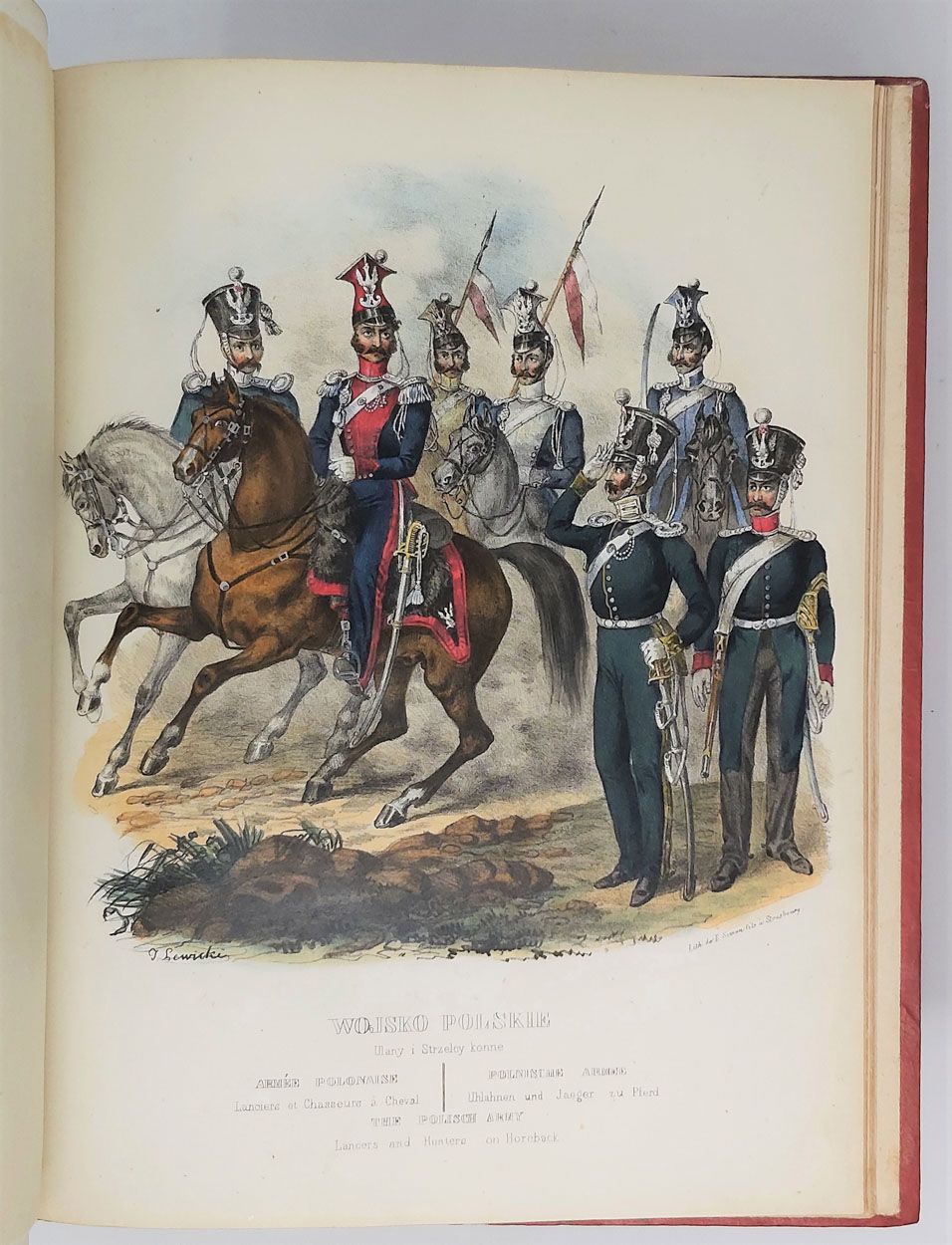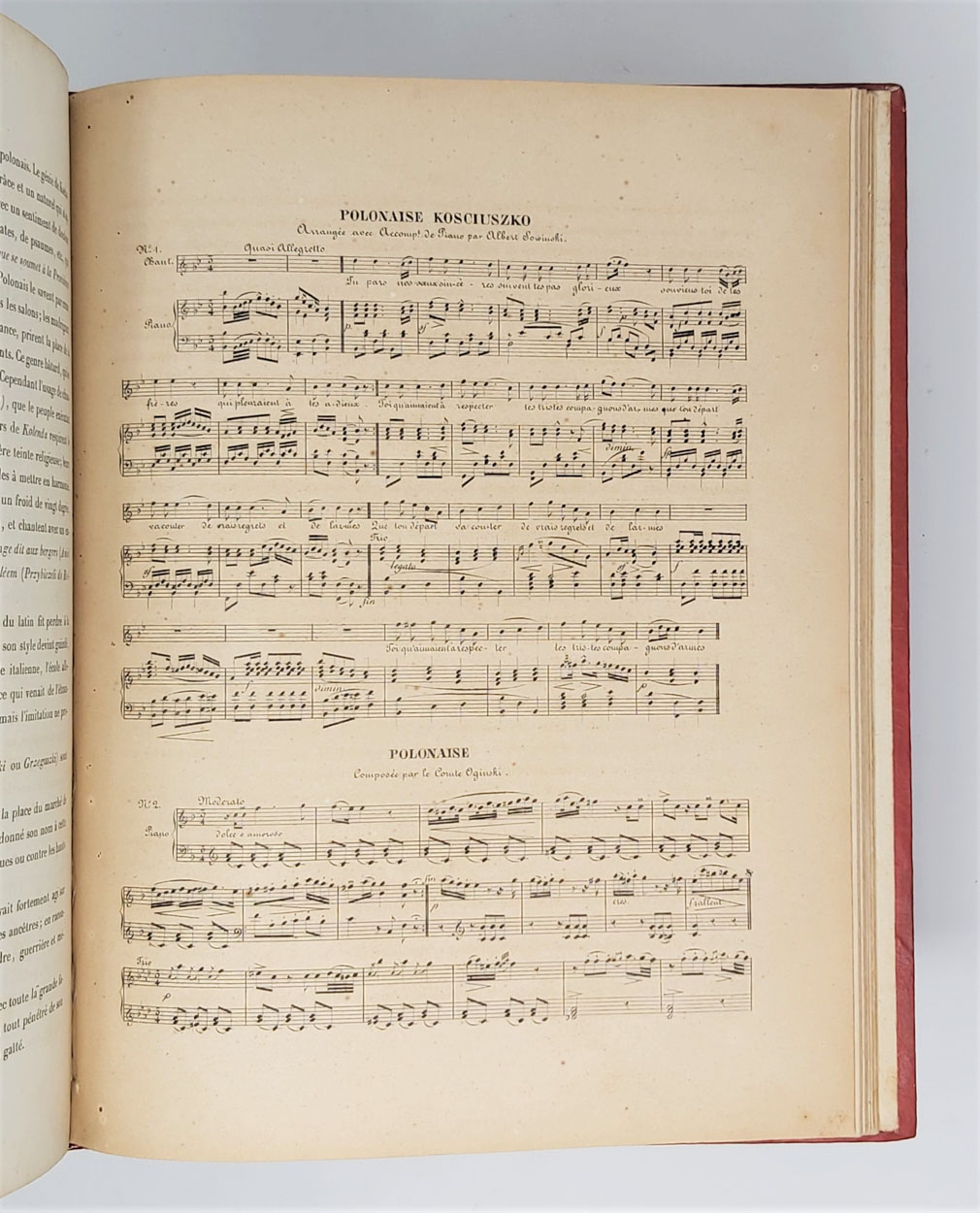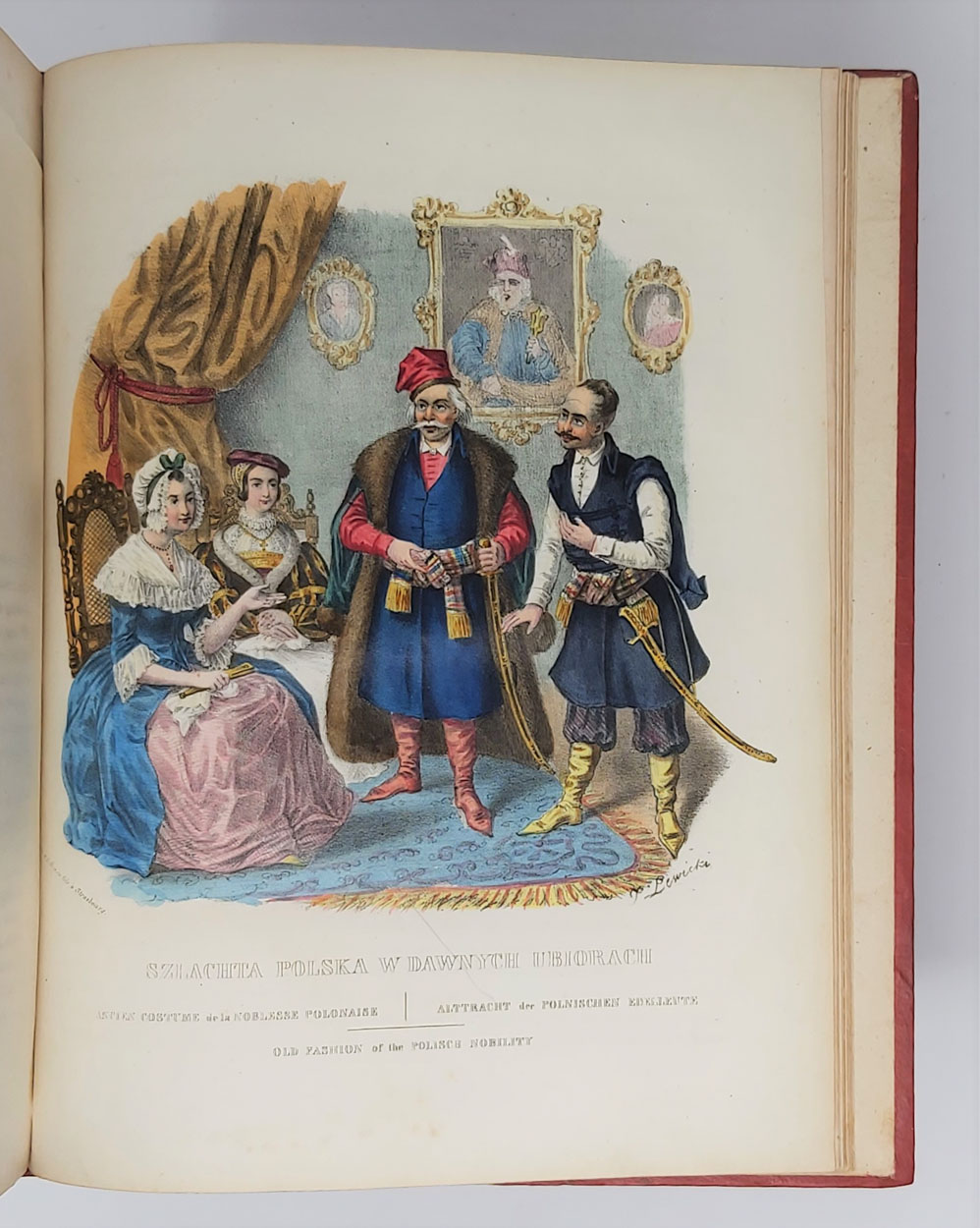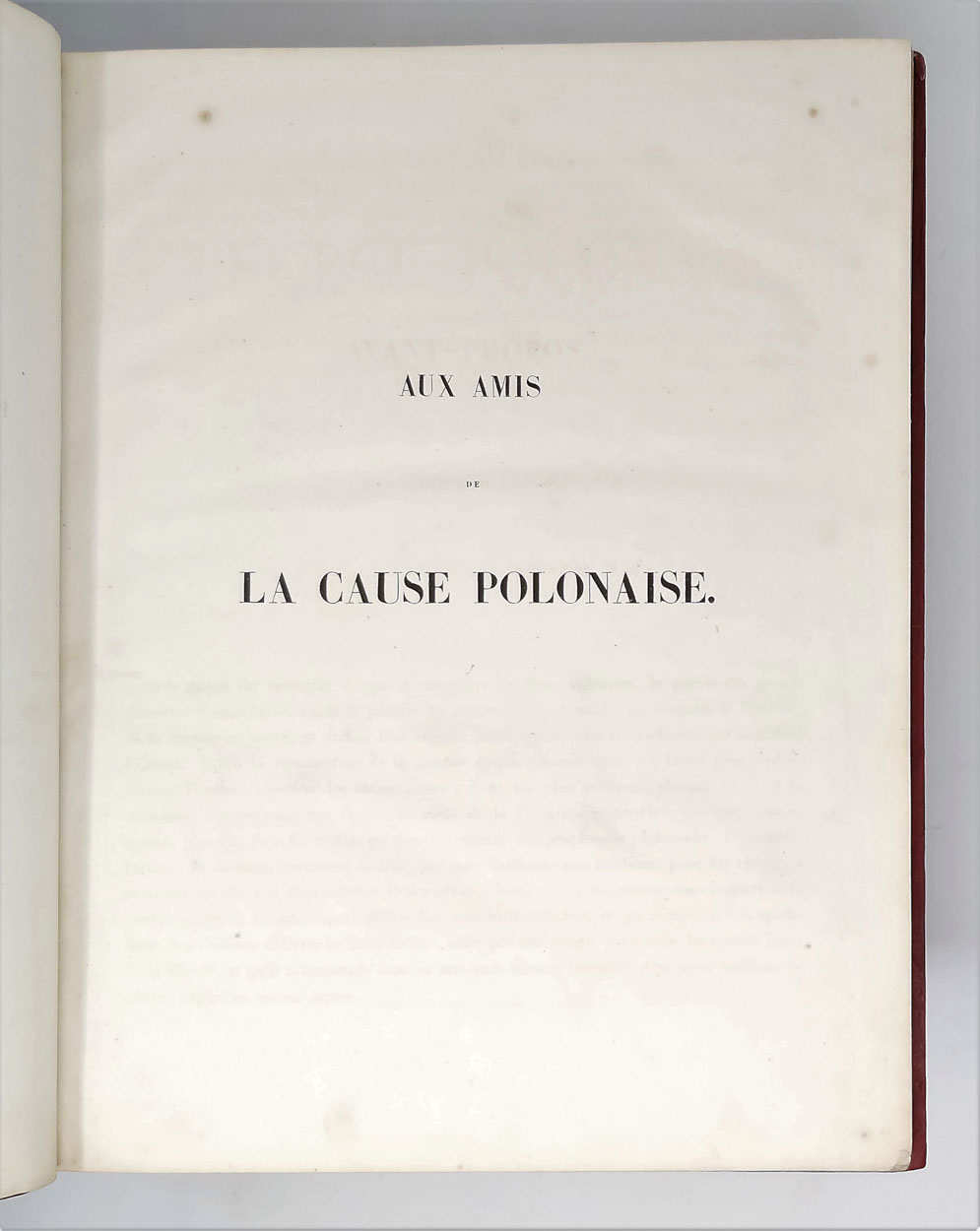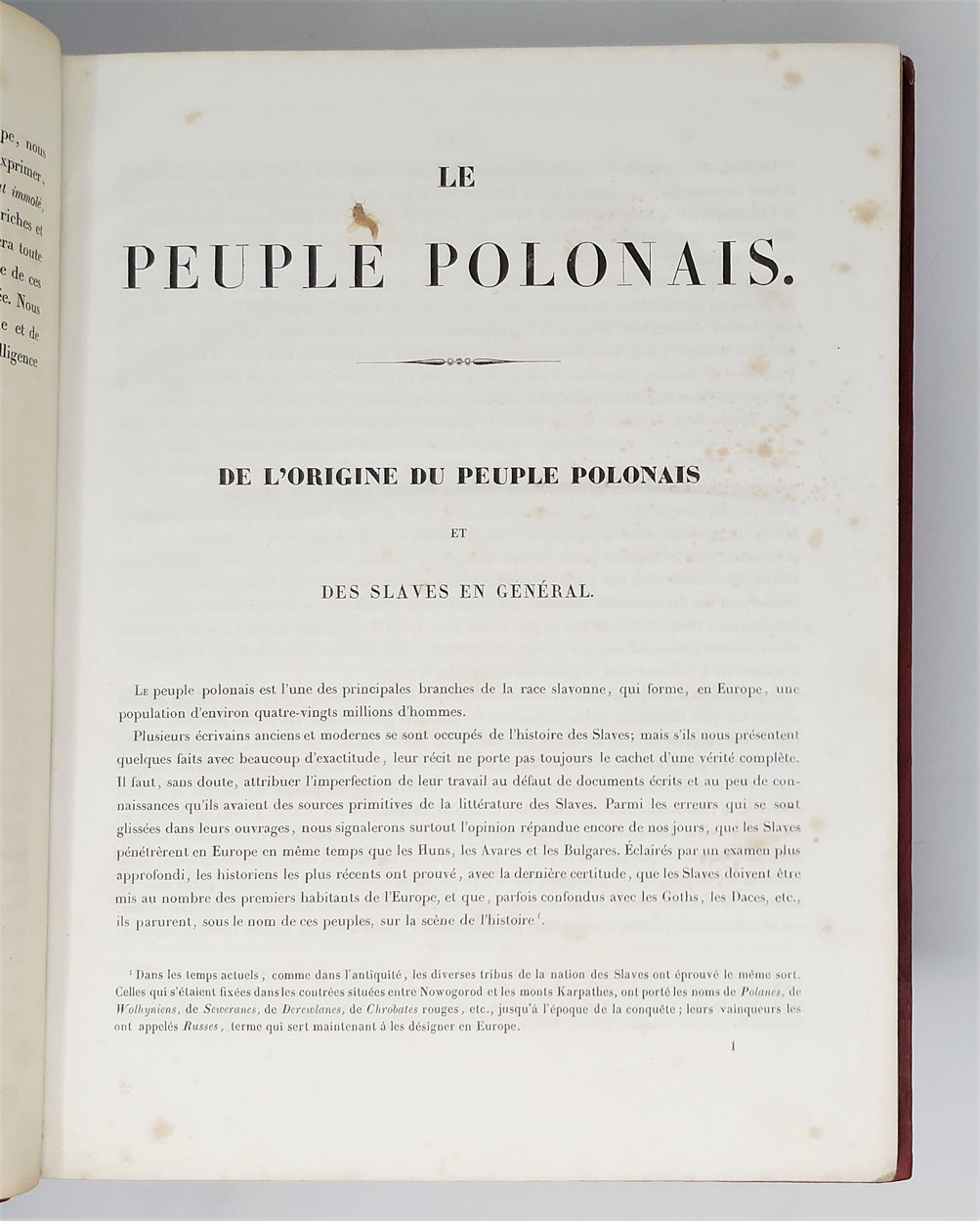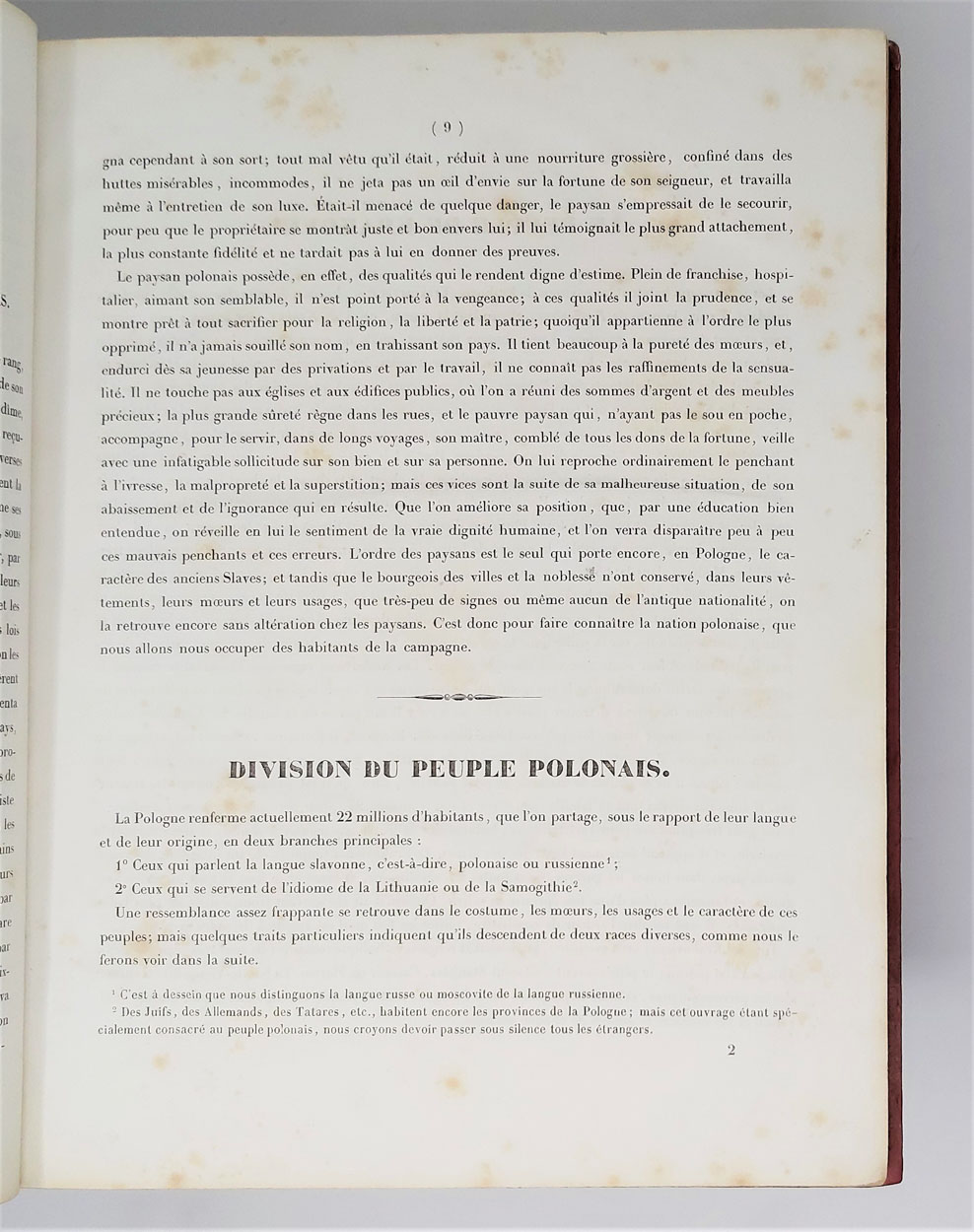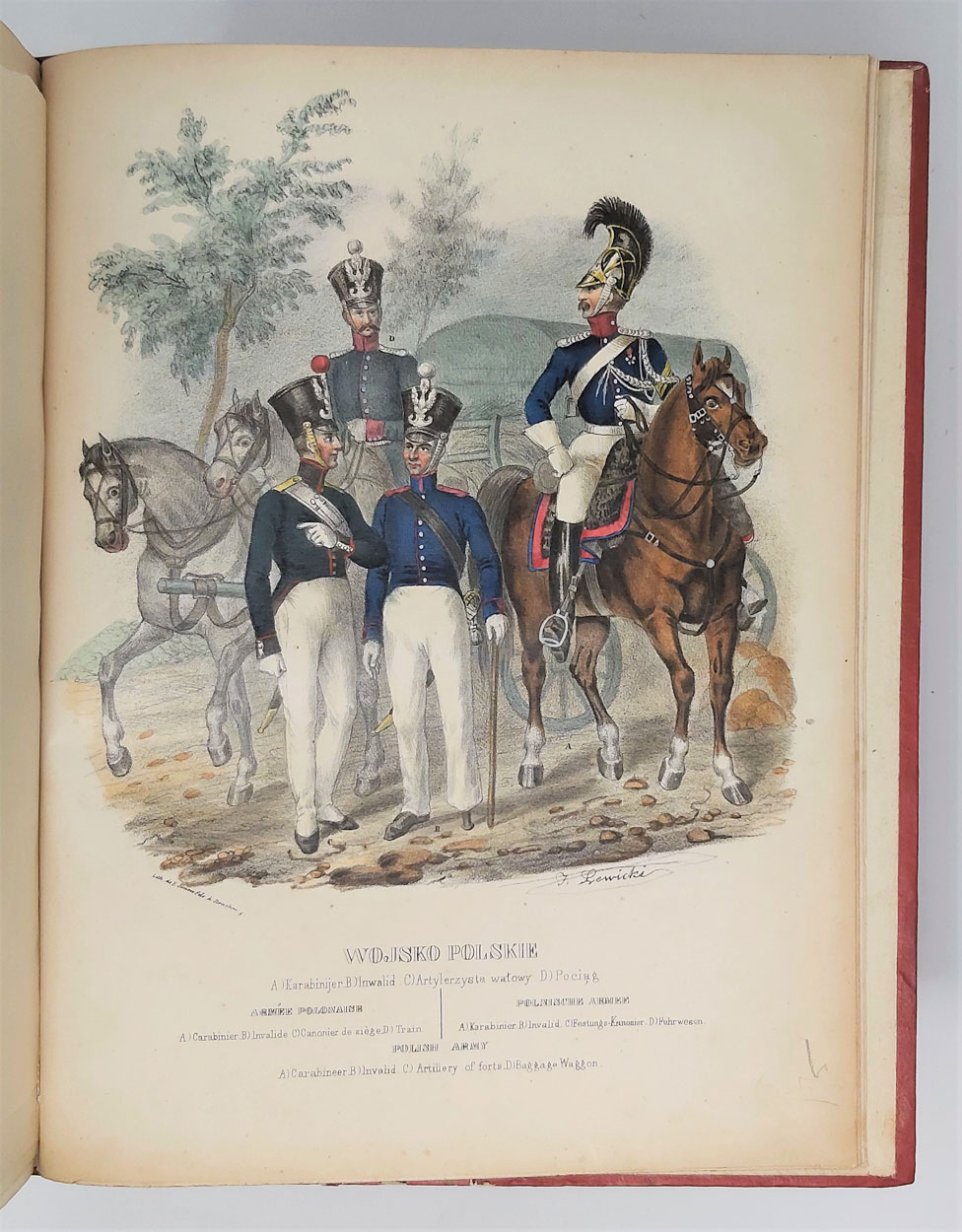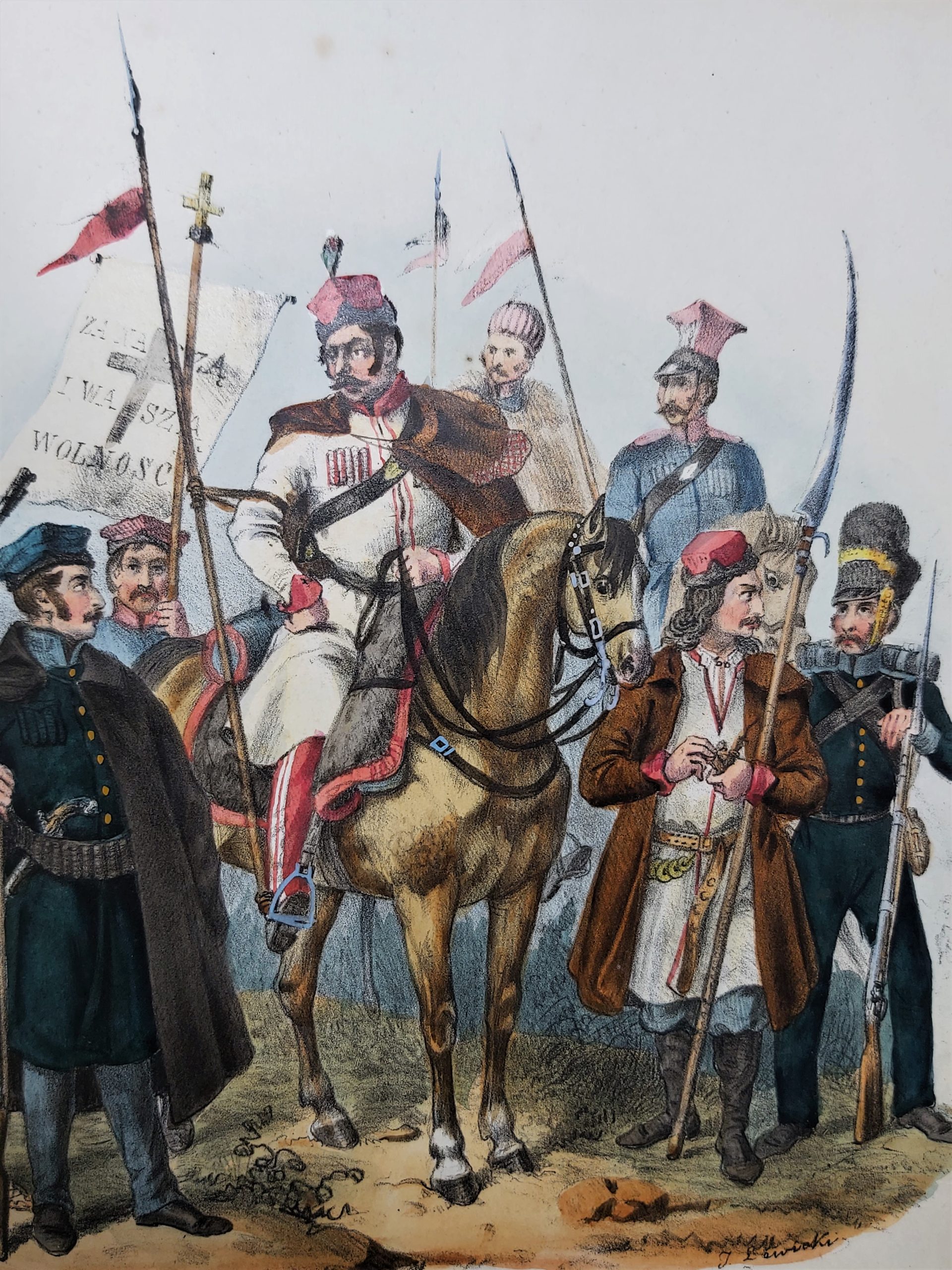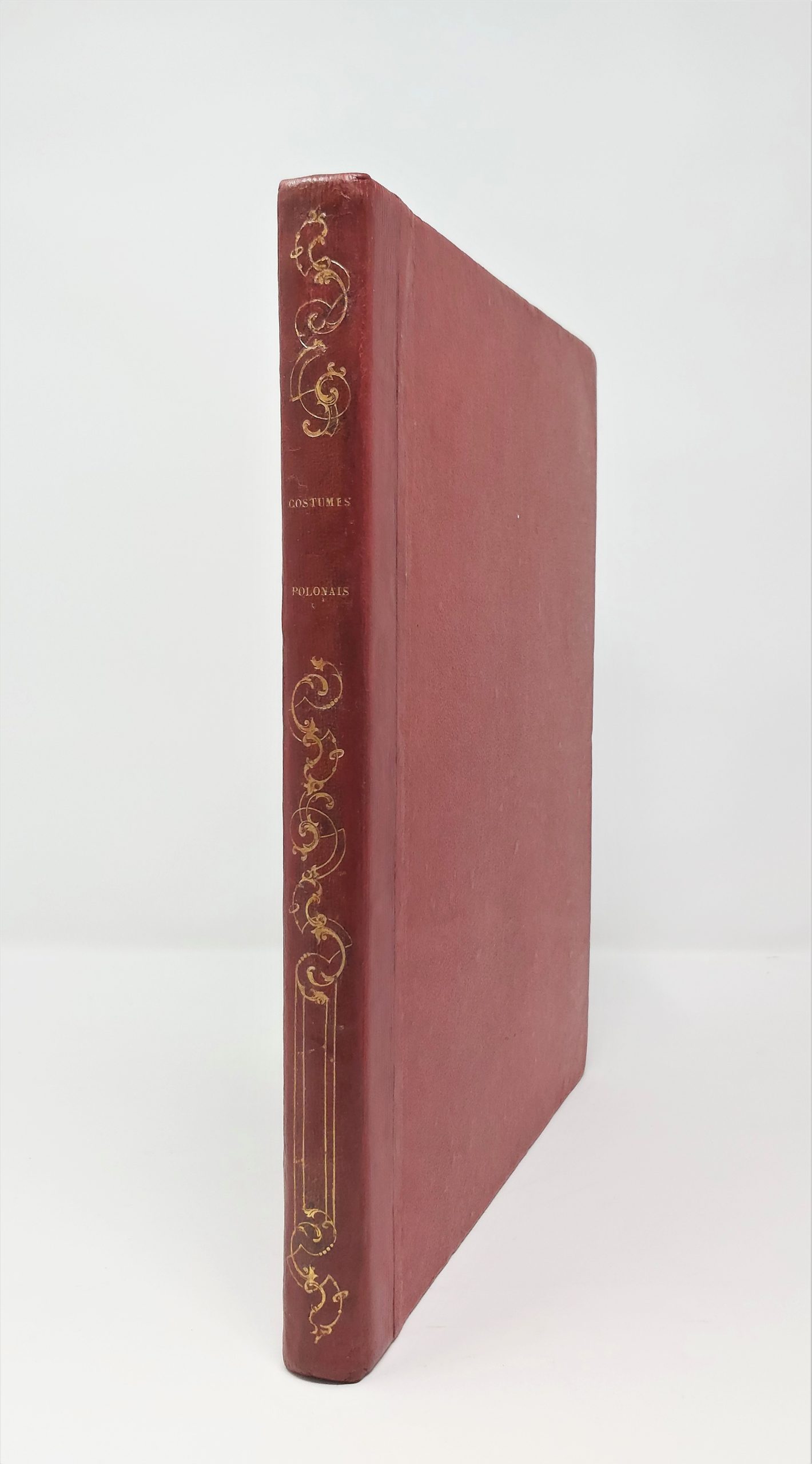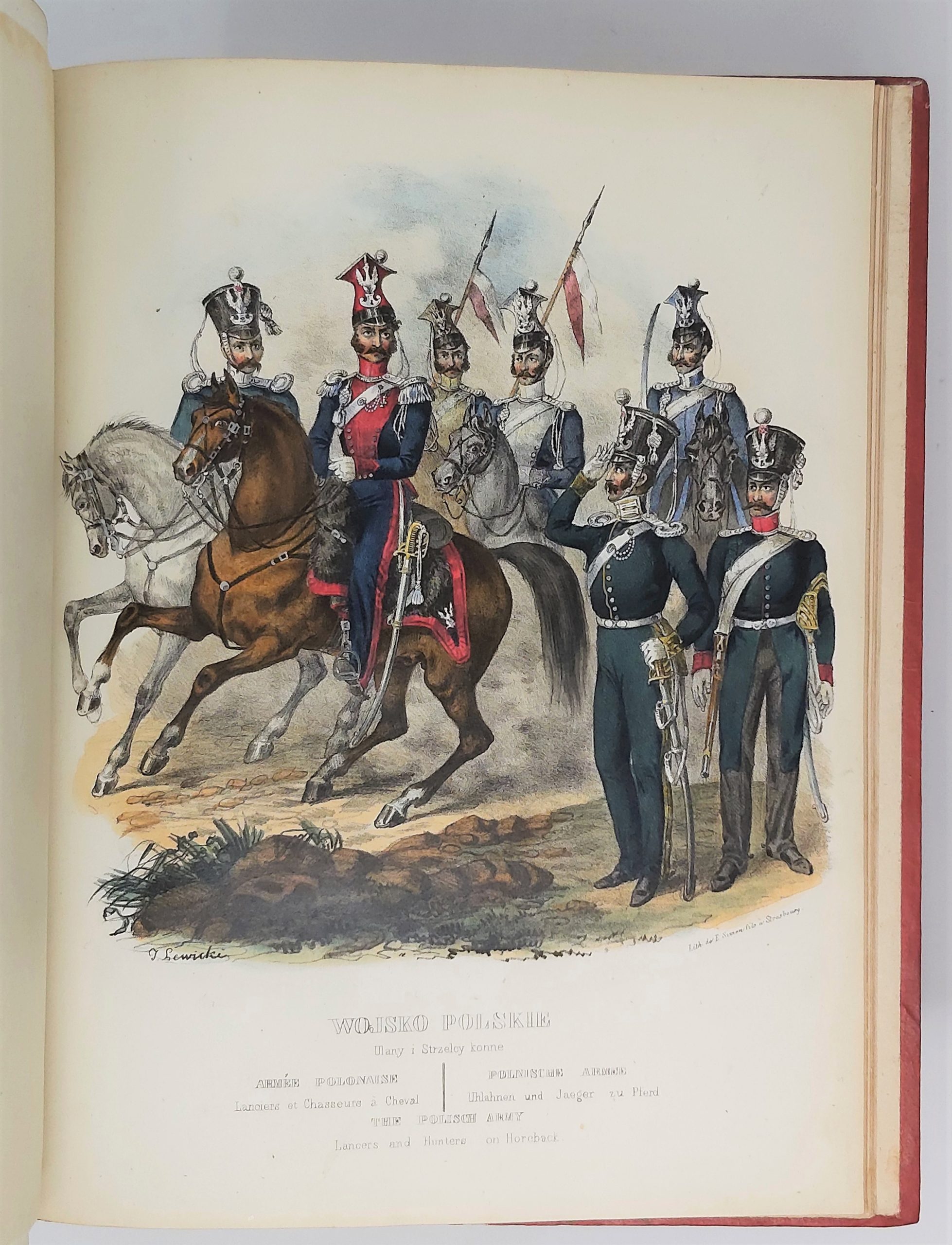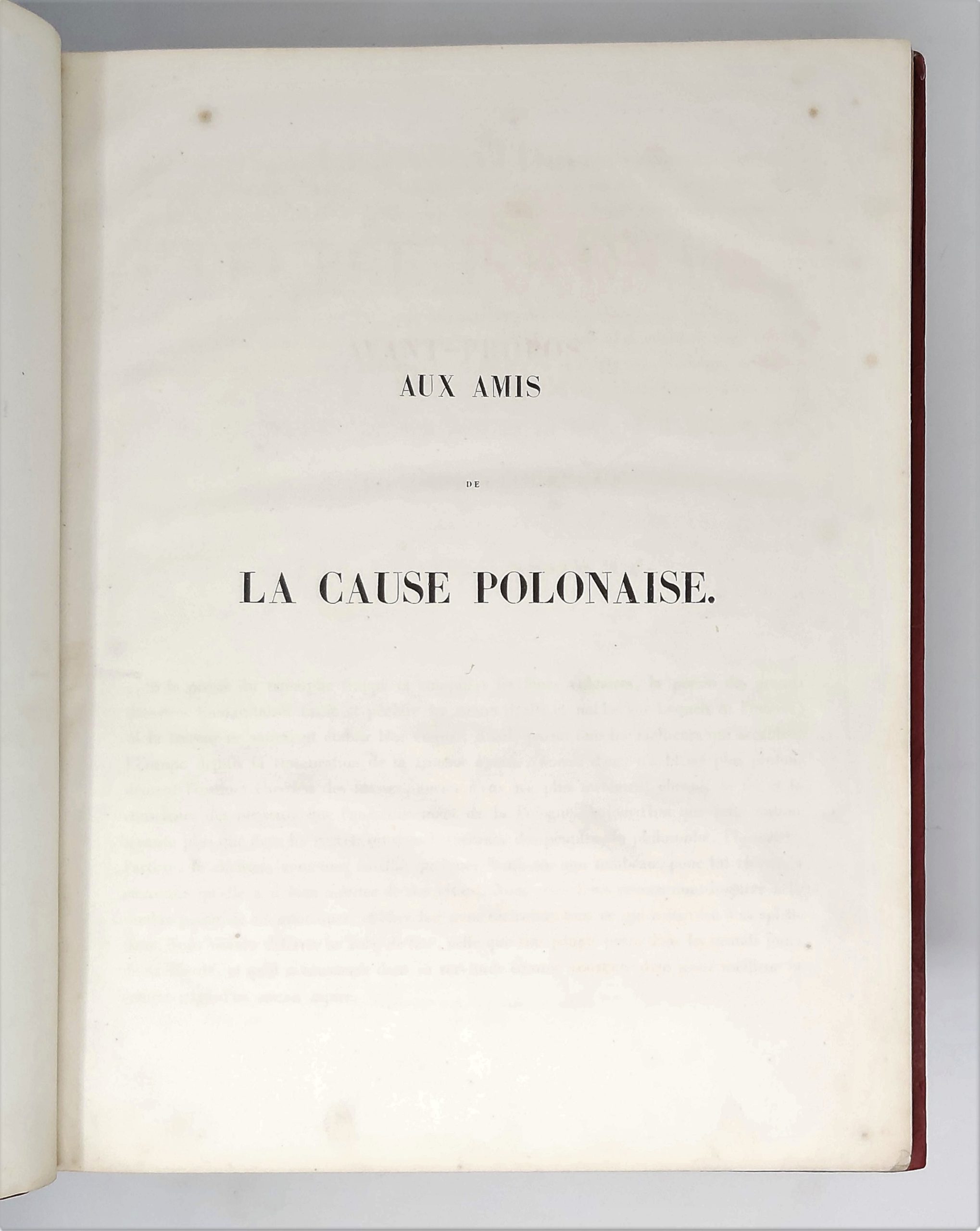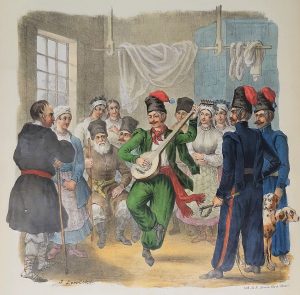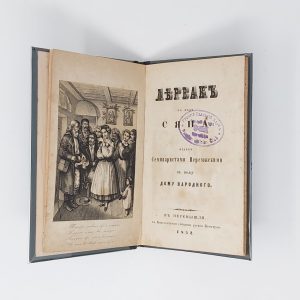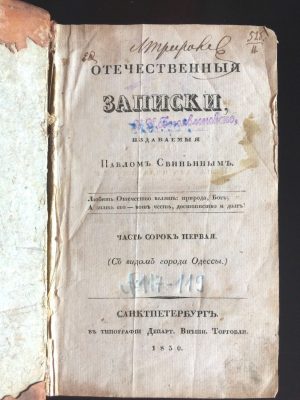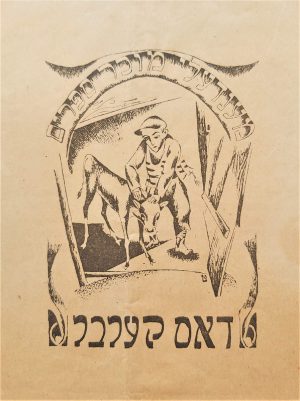Our Notes & References
Beautiful work illustrating the tradional costume as political revendication and manifestation of the national identity.
Also one of the very few books on Polish costume, chronologically the third such book listed by Colas.
Compiled by the Polish political activist and literary critic Zienkowicz (1808-70), who fled to France during the Great Emigration, the work bears a strong political statement. Dedicated “Aux amis de la cause polonaise”, it begins with a lyric introduction defending the national character of Poland, “this nation [which] no longer exists but in the regrets or hopes of the people”. Zienkowicz denounces in particular the “cruel and ridiculous” Russian decree, which forbade the use of national costumes. His work further covers the history of Polish peoples and regional characteristics, but also analyses wider aspects: a whole chapter is dedicated to Polish music (illustrated with notes of Polonaises, among other melodies, exactly contemporary of Chopin’s – his celebrated Military polonaise being published also in 1841), another explains the social structure of the country and the book ends with the description of the Polish army, with the appropriated, colourful plates showing Polish soldiers and cavalry.
Zienkowicz’s text is accompanied by magnificent plates lithographed by John Nepomuk Lewicki (1795-1871) – an outstanding engraver, lithographer, draftsman and a leading Polish painter working in exile. The illustrations are highly finished, showing Polish peoples in the region-specific costumes set against attractive backgrounds. The work includes also sections on Ukraine (with what is maybe its most famous plate), Lithuania, Belorussia.
After the Third Partition of Poland (1795) the Polish–Lithuanian Commonwealth was divided among Prussia, the Austrian Empire, and the Russian Empire, which effectively ended the Polish-Lithuanian national sovereignty until 1918. Russia’s attempts to further suppress the country’s political and cultural freedoms led to an armed rebellion in 1830–31, known as the November Uprising, in which Zienkowicz himself took part. The defeat of the uprising in autumn 1831 led to a mass emigration of the intelligentsia that became known as the Great Emigration.
“Rare” according to Solovev, an important Russian bookdealer of the early 20th century, who marking the book 70 roubles, a significant price. We can assume that such works indeed weren’t much welcome by the Russian authorities…
An attractive example elegantly bound, with the plates retaining fresh colours.
Bibliography
Colas 3115; Lipperheide 1391 and K63; Solovev Kat.105, 158a (70 rub.).
Physical Description
Quarto (30.5 x 24 cm). [viii] including half-title and title, 125, [ii] pp., with [2] ll. of music and 39 hand-coloured lithographed plates heightened with gum arabic by Simon after J. Lewicki and A. Wittmann, plate captions in Polish, French, German and English, tissue guards.
Binding
Contemporary red morocco spine over red paper boards, flat spine gilt.
Condition
Binding in attractive condition, spine skilfully refurbished; text with some light spotting, mostly marginal and mostly in text, as usual plates of slightly varying sizes and some on browned paper.

